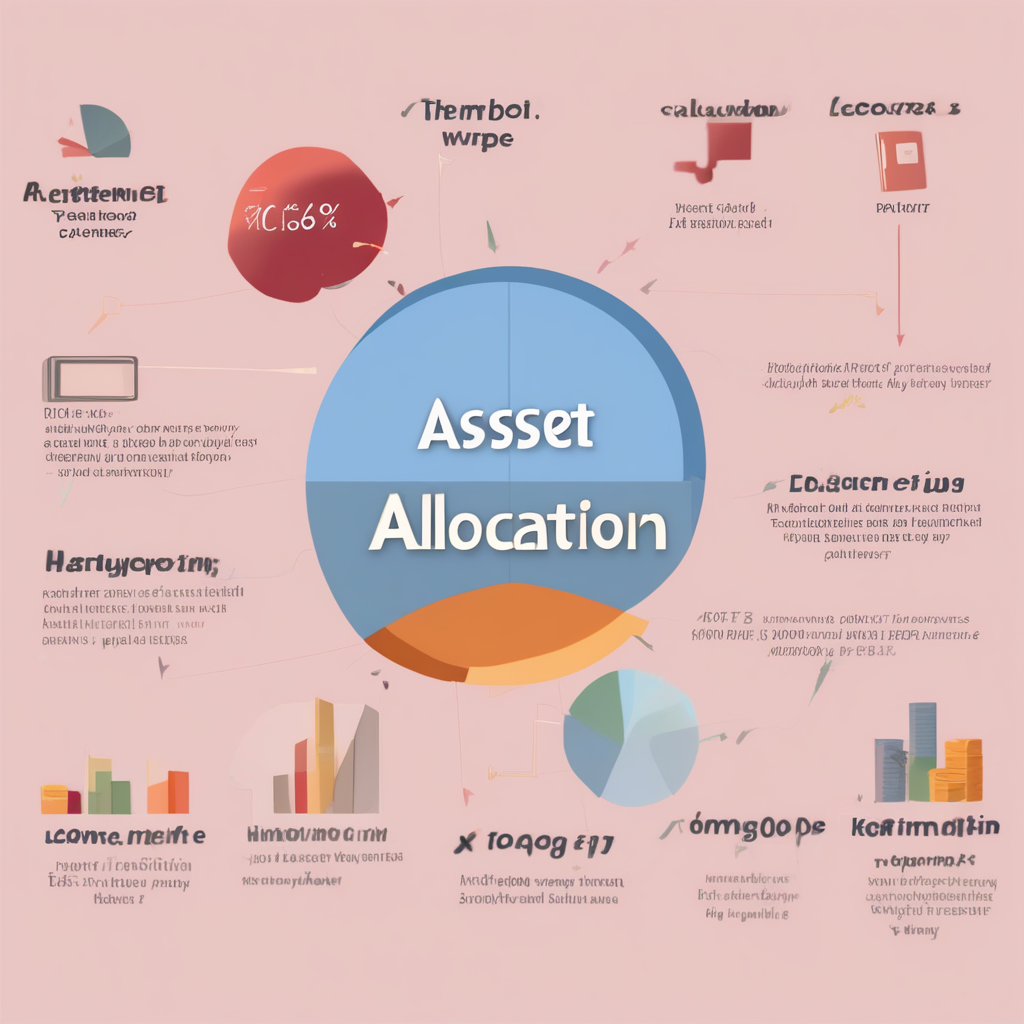Introduction
Imagine you have a big jar of candies. Would you put all your candies into one big bag or spread them into different smaller bags? That’s what asset allocation is all about, but with money instead of candies.
Asset allocation means putting your money into different places, like stocks, bonds, or even savings, so you don’t lose all your money if one place doesn’t do well. This guide is here to teach you the fun way about asset allocation in simple, kid-friendly words. Let’s jump right in!
What is Asset Allocation?
Asset allocation is like creating a treasure map for your money. Just like you wouldn’t put all your toys in one box, you shouldn’t put all your money in one place. It’s about spreading your money into different types of investments to keep it safe and growing.
Why is Asset Allocation Important?
Asset allocation helps you be smart with your money. It’s like wearing a helmet while riding a bike—it keeps you safe from big falls. By spreading your investments, you can have a mix of safety and growth. This helps protect you from losing too much if one investment doesn’t go as planned.
Types of Assets in Asset Allocation

There are different types of “treasure boxes” you can put your money in. Let’s explore the three main types:
1. Stocks (Equities)
- Stocks are like buying a tiny piece of a company.
- When the company does well, your stock’s value grows.
- It’s risky but can give high returns if you’re lucky.
2. Bonds (Fixed Income)
- Bonds are like lending money to someone who promises to pay you back with a little extra.
- They are safer than stocks but usually give smaller returns.
- Bonds are great for those who like steady, predictable money.
3. Cash (Savings)
- Cash is the safest but grows the slowest.
- It’s like keeping your money in a piggy bank—it’s safe, but it doesn’t grow much.
- Good for emergency needs or quick access.
How to Decide Your Asset Allocation?
Choosing the right mix depends on your age, how much money you have, and how much risk you can handle. If you’re young, you might be okay with more stocks because you have time to recover from losses. Older people might prefer more bonds to keep their money safe.
Key Features of Asset Allocation

Here’s a table showing the key features of asset allocation. It’s like a quick cheat sheet to understand the basics!
| Feature | Description |
|---|---|
| Diversification | Spreading money into different investments to reduce risk. |
| Risk Management | Helps manage how much risk you’re willing to take. |
| Growth Potential | Combining assets to balance between safety and earning more money. |
| Flexibility | You can change your asset allocation as you grow older or your goals change. |
| Income Stability | Some assets, like bonds, provide steady income. |
| Safety Net | Keeping some cash ensures you have quick access when needed. |
| Personalization | You can tailor your investments based on your goals, like saving for college. |
| Rebalancing | Adjusting your investments as markets change to keep your plan on track. |
Tips to Make Your Asset Allocation Work
- Start Early: The sooner you start investing, the more time your money has to grow.
- Review Regularly: Check your asset allocation every year to make sure it still matches your goals.
- Don’t Panic: If your stocks drop, don’t sell everything. Remember, ups and downs are normal.
- Set Goals: Know what you’re saving for—college, a car, or a dream vacation!
- Ask for Help: Talk to a financial advisor if you’re unsure about where to put your money.
Common Mistakes in Asset Allocation

It’s easy to make mistakes, but knowing what they are can help you avoid them!
- Putting All Money in One Place: This is like betting all your money on one game—risky and dangerous.
- Ignoring Risks: Just because a friend is investing in stocks doesn’t mean it’s right for you.
- Not Updating Your Plan: Your asset allocation should change as you grow and your goals shift.
- Chasing Hot Trends: Just because everyone is investing in a new app doesn’t mean you should.
- Not Diversifying Enough: A mix of different assets keeps you safe and sound.
FAQs About Asset Allocation
1. What is the main goal of asset allocation?
The main goal is to spread your money into different types of investments. This way, you can reduce risks and still have the chance to grow your money.
2. Can kids start learning about asset allocation?
Absolutely! It’s never too early to learn about managing money. You can start with small savings and learn how to balance between spending and saving.
3. What happens if I don’t change my asset allocation?
If you don’t adjust your allocation, you might end up with too much risk or too little growth, especially as you get older. It’s important to update your plan regularly.
4. Is investing in stocks the same as gambling?
No, investing in stocks is not gambling. When you buy stocks, you’re buying a part of a company that can grow over time, while gambling is purely based on luck.
5. What’s the best asset allocation for beginners?
There’s no one-size-fits-all answer. Beginners often start with a mix of 60% stocks, 30% bonds, and 10% cash, but you should always adjust based on your own comfort with risk.
Conclusion
Asset allocation is like having a superpower for your money. It teaches you how to spread your investments wisely, protect your savings, and grow your wealth over time. By understanding the basics of asset allocation, you’re setting yourself up for a bright financial future. Remember, it’s all about balance, patience, and making smart choices!
Whether you’re saving for college, a new bike, or even just a rainy day, knowing where to put your money is key. So, keep learning, ask questions, and make your money work for you! Let’s make your financial dreams come true, one smart decision at a time!
